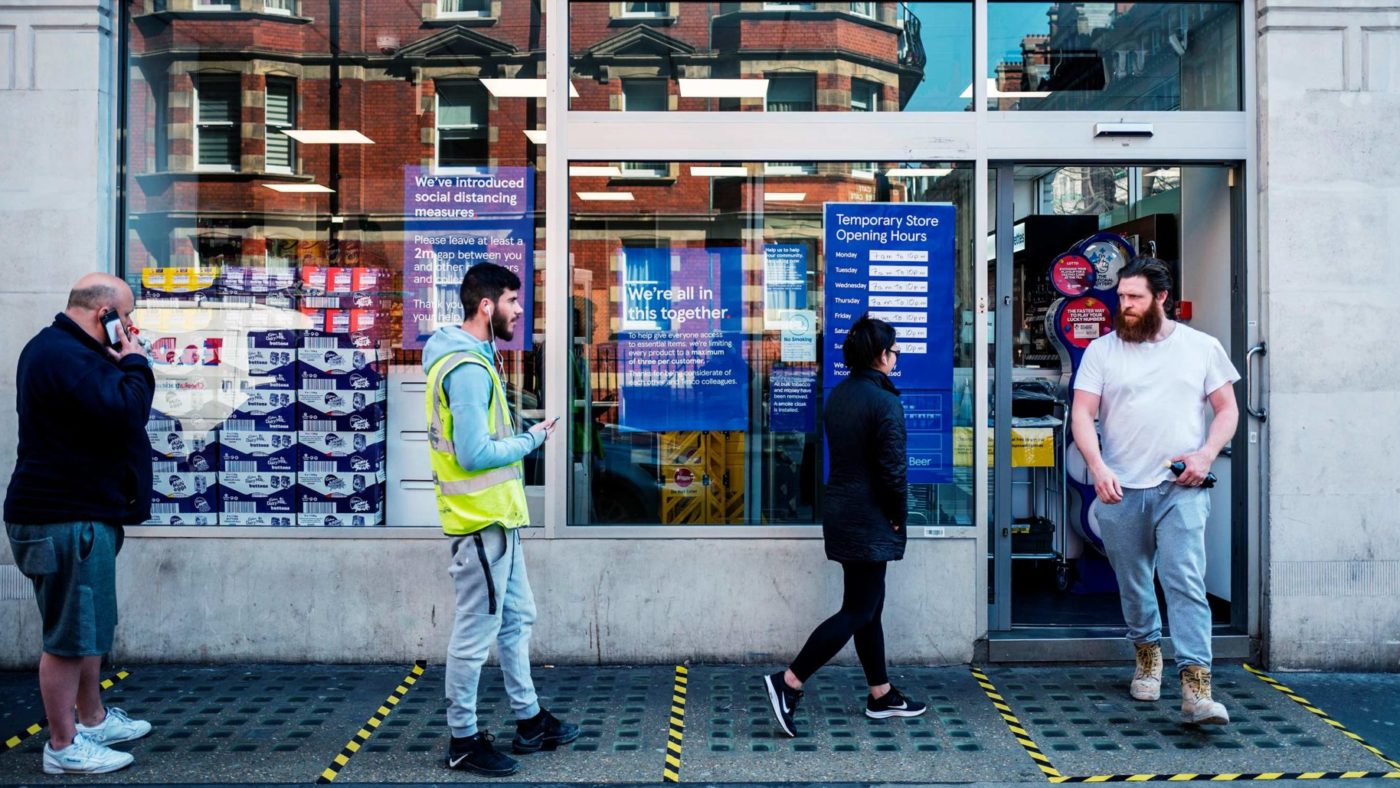As soon as B&Q announced it would reopen some of its DIY stores, their website crashed and long queues started forming. Traffic this last week was up 10-15% on the previous week, according to the AA, who announced that callouts had quadrupled.
The sun is shining. Many aren’t giving each other quite such a wide berth when walking in the street. With news of declining numbers of hospital and ICU admissions, the immediate crisis appears to be dissipating. The NHS is broadly coping.
People are desperate to get back to work. They don’t want to kick their heels at home. They want to do something productive — and something that will help pay the bills, which keep on coming.
As we have said, at length, the longer the lockdown continues, the more the economic damage escalates. A six-week lockdown is far more than twice as damaging as a three-week one, as more and more businesses run out of cash and the effect of their closing dissipates through the economy. Carry it on much further and there may be no functioning economy to restart.
This is not just a ‘lives are more important than money’ situation: the loss of businesses means a loss of livelihoods, a loss of wealth. We need to fund healthcare and welfare, and all the social and psychological problems too—not just the worry of having no income, but the domestic violence, depression, child abuse and other problems that now seem to be rising.
We need to catch the public mood and start unwinding the lockdown, bit by bit — before the public starts ignoring the government altogether and the policy starts to unravel. People are more likely to comply with social distancing in the long run if they believe it to be reasonable and proportionate. Yes, we need to be careful to avoid a second spike of cases that overwhelms the healthcare system. Yes, we need much more testing and tracing. But we shouldn’t let the distant prospect of perfection stop us moving in the right direction.
That other countries are unwinding adds to the public disquiet in the UK. We need to look at what our neighbours are doing and at least explain the plan to get on with things as and when it’s possible to do so. The public are adult enough to understand two messages at once.
The European Commission has set out a ‘roadmap’ for a ‘phased’ unwinding, combined with continued protection of the most vulnerable and stepped-up disinfection of transport facilities. It’s a fairly sensible outline. But most EU countries are following their own public’s mood and the scientific evidence of their own outbreaks and doing their own things.
Two weeks ago, Austria opened small shops, DIY stores and garden centres. Next week, all shops, shopping malls—even hairdressers—are allowed to open, along with outdoor sports such as tennis and golf, and there is talk of re-opening restaurants and hotels from mid-May. Of course a significant caveat is that Austria shut down much earlier and had a lesser outbreak.
Denmark, another country where excess deaths have been relatively low, has reopened childcare and schools for under-11s—who are less affected by the virus and appear less likely to pass it on. And older children are likely to be back in school in early May. Most shops remain closed, but at least there is a public debate about it.
Germany has no plans to reopen restaurants, but car dealers and smaller shops will soon be able to open provided they have adequate hygiene arrangements, and hairdressers too, after next week. Schools will also reopen then, and special distancing arrangements have been made for school transport and for students taking exams.
Even in Italy, which has had a worse outbreak than the UK, some regions have allowed bookshops and clothing stores to reopen, while France is proposing to reopen childcare and schools before mid-May.
Critics say the UK has been behind events throughout this crisis: not locking down early enough, planning extra ICU capacity but not planning enough PPE for those who staff it; not engaging fast enough with private labs to meet the testing and tracking needs. We should not be behind the curve again when it comes to understanding how best to unwind the lockdown—through the onerous ‘five tests’, at least one of which might never be met, suggest it might do exactly that.
We need a plan for how lockdown will end. If there are no moves, no debate, and no future plan, the public will get ahead of the politicians and much of the progress we’ve made will be lost.
Click here to subscribe to our daily briefing – the best pieces from CapX and across the web.
CapX depends on the generosity of its readers. If you value what we do, please consider making a donation.


